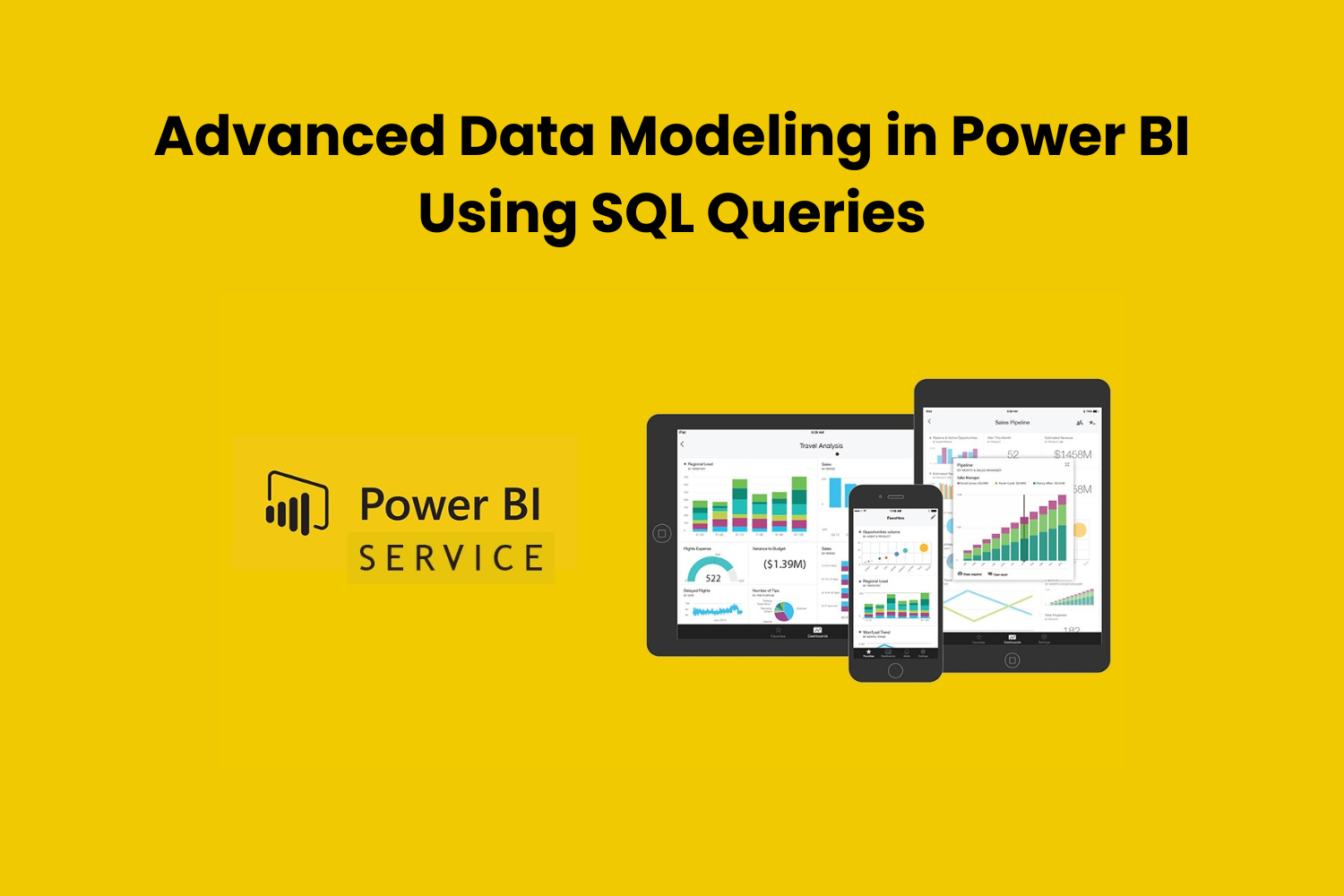Advanced Data Modeling in Power BI Using SQL Queries
Unlocking the full potential of Power BI requires a deep understanding of data modeling. While Power BI offers a range of tools for data modeling, leveraging SQL queries can take your modeling capabilities to the next level. In this blog, we’ll explore how you can connect SQL Server to Power BI to enhance your data modeling process, optimize performance, and gain valuable insights. Whether you’re a seasoned Power BI user or just getting started, mastering advanced data modeling by attending SQL Courses with SQL queries can significantly elevate your analytical capabilities.
Table of Contents
- Understanding Power BI and SQL
- Integrating SQL Queries into Power BI
- Optimising Performance with SQL Queries
- Enhancing Data Modeling Capabilities
- Conclusion
Understanding Power BI and SQL
Let’s quickly review Power BI and SQL before getting into deeper data modelling with SQL queries. Users can visualise and share insights from their data using Power BI, a powerful business analytics tool from Microsoft. Due to its user-friendly interface for modelling, data preparation, and visualisation, it is well-liked among business intelligence specialists and data analysts.
SQL, or Structured Query Language, on the other hand, is a common language for working with and maintaining relational databases. SQL is often used to manage, query, and update data in databases like MySQL, PostgreSQL, and Microsoft SQL Server. Because of its strength and versatility, SQL is a vital tool for data professionals with relational databases.
Integrating SQL Queries into Power BI
Relationships, computed columns, and measures are just a few of the data modelling capabilities that Power BI provides, but in some situations, using SQL queries may be more effective and flexible. One such situation is carrying out intricate computations or data transformations that are difficult to describe using Power BI’s built-in modelling features.
By integrating SQL queries with Power BI, You can use SQL’s capabilities to work with your data before it’s imported into Power BI’s data model. This may be quite helpful when working with enormous datasets or executing complex data aggregation, cleaning, or computations.
You may use Power BI’s “Get Data” function to connect to your SQL database and create custom SQL queries to get the data you want to integrate SQL queries. After using SQL to extract the data, you can import it into Power BI and utilise it as the foundation for your data model. With this method, you can combine Power BI’s analytical and visualisation features with the data manipulation skills of SQL.
Optimising Performance with SQL Queries
Performance optimisation is another benefit of employing SQL queries with Power BI. You may enhance the efficiency of your Power BI reports and dashboards by using SQL queries, which are highly optimise for data searching and manipulation.
For instance, you may reduce the quantity of data that has to be import into Power BI by using SQL queries to carry out aggregations and computations at the database level. This may greatly enhance the speed of queries, particularly when working with big datasets or intricate computations.
To further enhance speed, you may utilise SQL queries to optimise views or stored procedures in your database, which Power BI can access. You may lessen the strain on Power BI and enhance system performance by shifting part of the data processing to the database server.
Enhancing Data Modeling Capabilities
Using SQL queries in Power BI also improves your data modelling skills by enabling you to use more sophisticated modelling strategies. SQL queries, for instance, may be use to build unique tables or views that compile information from many sources or carry out intricate computations.
Moreover, sophisticated data modelling patterns like gradually changing dimensions or sophisticate data validation procedures may be implement using SQL queries. When utilising Power BI’s native modelling tools alone, these patterns might be challenging to apply. However, you can implement them more effectively and quickly by using SQL queries.
You may increase the depth of your analytical skills by becoming an expert in complex Advanced Data Modeling with Power BI’s SQL queries. SQL queries may be useful in your Power BI arsenal if you’re trying to improve efficiency, use sophisticated modelling approaches, or have more freedom in your data modelling process.
Conclusion
To sum up, data professionals may reap many advantages from using SQL queries for sophisticated Advanced Data Modeling in Power BI. You can improve your data modelling skills, optimise performance, and extract new insights from your data by integrating SQL queries into Power BI. Whether dealing with enormous datasets, intricate computations, or sophisticated modelling patterns, being proficient with Power BI SQL queries can help you accomplish your data analytics objectives more successfully. If you want to improve your knowledge of SQL and Power BI, you should take SQL classes that will help you become even more proficient with these two potent technologies.















Post Comment